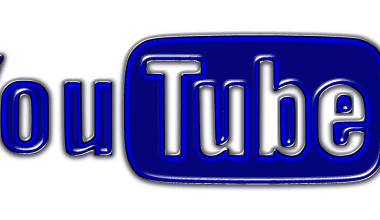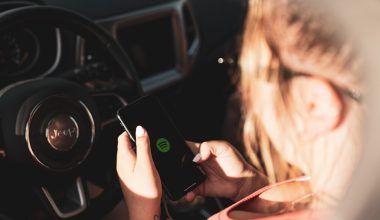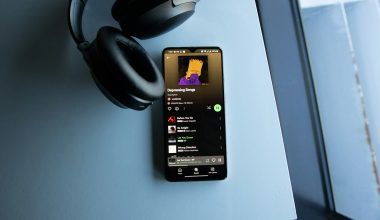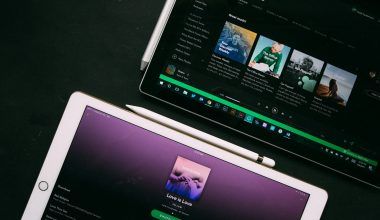In the ever-evolving music industry, one undeniable force is shaping the landscape: collaborations. Artists from various genres and backgrounds are increasingly recognizing the immense benefits that come from working together. Whether it’s a chart-topping hit, a creative experiment, or an effort to reach new audiences, collaborations have become a driving force behind many of today’s most successful songs.(Power of Collaborations in Music Industry)
Collaborations in the music industry are more than just two artists recording a song together. They encompass a wide range of partnerships—between songwriters, producers, instrumentalists, vocalists, and even brands or platforms. These partnerships bring fresh perspectives, combine fanbases, and create opportunities for artistic growth that wouldn’t be possible in isolation.
From creative innovation to commercial success, collaborations offer numerous advantages. This blog explores how collaborations in the music industry can enhance visibility, boost creativity, cross genre lines, and strengthen social media presence. We’ll also look at successful examples and the future of collaborations in the modern music era.(Power of Collaborations in Music Industry)
Why Collaborations are Essential in Music Today
In today’s digital era, where new music is constantly being released, standing out can be challenging for artists. One of the most effective ways to gain attention is through music collaborations. These partnerships allow artists to tap into new markets, experiment with their sound, and combine fanbases, creating a win-win situation for all parties involved. Here are some of the key reasons why collaborations are so essential:
- Increased Exposure and Reach: Collaborating with another artist allows you to introduce your music to their fanbase, and vice versa. This results in a broader reach, as fans of both artists are more likely to listen to the collaborative track. This increased exposure can help boost streaming numbers, radio play, and social media buzz.(Power of Collaborations in Music Industry)
- Fresh Creative Energy: Working with another artist brings new creative energy into the studio. Every artist has a unique approach to songwriting, production, and performance, and when these approaches mix, magic happens. A collaboration can push an artist out of their creative comfort zone and open up new artistic possibilities.
- Cross-Genre Appeal: Genre-blending collaborations are a growing trend in the music industry. Collaborations between artists from different musical backgrounds can result in innovative and exciting music. For example, a collaboration between a pop artist and a hip-hop star can create a sound that appeals to both pop and hip-hop fans, expanding the audience base of both artists.
- Enhanced Marketability: Collaborative tracks are often more marketable, as they appeal to fans of both artists. In addition, many music platforms, such as Spotify, Apple Music, and YouTube, promote collaborative tracks heavily, further increasing their visibility. When these tracks get featured on playlists, they receive more streams, and the artists involved gain increased exposure.
How Collaborations Expand Your Audience
One of the most immediate benefits of collaborating with another artist is the potential to reach new listeners. Every artist has their own dedicated fan base, and a well-executed collaboration allows you to introduce your music to your collaborator’s audience. For instance, if a hip-hop artist teams up with a pop singer, they each gain exposure to a demographic that may not have otherwise listened to their music.(Power of Collaborations in Music Industry)
This audience crossover is one of the reasons why collaborations are such a powerful tool in growing your fanbase. When artists collaborate, it opens the door for their music to reach listeners across different genres and regions. Fans of both artists are likely to check out the collaboration, increasing the number of streams, shares, and downloads.
Music platforms such as Spotify and Apple Music also highlight collaborative tracks by featuring them in curated playlists and recommendations. These platforms promote collaborative efforts by placing them in cross-genre or “trending” playlists, further boosting the song’s reach. Additionally, collaborations often get more media attention, with music blogs, magazines, and social media influencers discussing the unique nature of the partnership. This, in turn, helps both artists gain more visibility.
For emerging artists, a collaboration with a more established artist can be a game-changer. It can help them reach a much wider audience, resulting in a significant increase in streams, followers, and overall recognition. For example, when Lil Nas X collaborated with Billy Ray Cyrus for Old Town Road, it brought Lil Nas X’s unique blend of country and rap to a massive mainstream audience. The song went on to break records, demonstrating the incredible power of collaborations.(Power of Collaborations in Music Industry)
Creative Growth Through Collaborations
Creativity thrives when different minds come together. One of the greatest advantages of collaborating in the music industry is the ability to bring diverse creative talents into the mix. Whether it’s two singers working together or a producer collaborating with a songwriter, the shared creative process opens up new possibilities.
For many artists, working solo can sometimes feel like hitting a creative wall. By collaborating with others, they can push beyond their usual boundaries and explore new ideas. A producer might introduce a vocalist to a different beat or sound they wouldn’t have otherwise considered. A songwriter might come up with a fresh perspective on a melody when paired with another writer who has a different style.
This fusion of creative energy can result in groundbreaking music. Some of the most iconic songs in history are the product of collaborations that pushed boundaries and combined diverse talents. The creative growth that comes from working with others not only leads to new sounds but also helps artists grow personally and professionally. It is through these collaborative efforts that artists often find new ways to express themselves and connect with their audiences on a deeper level.
Moreover, the collaboration doesn’t always have to be between artists. Collaborating with a skilled music producer, engineer, or even a visual artist for the album artwork can greatly enhance the final product. In many cases, a producer can take a good song and turn it into a hit by introducing the right production techniques. Likewise, collaborations with songwriters can help artists find the right words to express their emotions and ideas, ultimately creating a stronger connection with listeners.
Breaking Genre Boundaries with Collaborations
One of the most exciting aspects of modern-day collaborations is the ability to break down genre barriers. Genre-blending collaborations are on the rise, with artists from seemingly incompatible musical backgrounds coming together to create something new and unique.
Traditionally, artists were more likely to stay within their own genres, but today’s listeners are more open to hybrid sounds. Pop, hip-hop, rock, electronic dance music (EDM), and even country music are all mixing in ways that would have been unheard of a few decades ago. Collaborations have allowed this blending of genres to flourish, giving birth to new subgenres and musical trends.
Examples of successful cross-genre collaborations include Ed Sheeran and Justin Bieber’s I Don’t Care, a track that combined pop and electronic elements, and Despacito by Luis Fonsi featuring Daddy Yankee, which blended Latin pop with reggaeton and became an international hit. These types of collaborations not only appeal to fans of different genres but also expand the artists’ musical portfolios, showcasing their versatility.
For independent and emerging artists, cross-genre collaborations can provide an opportunity to differentiate themselves in a saturated market. By blending different styles, these artists can create a signature sound that sets them apart from the competition. The experimentation that comes from collaborating across genres often leads to music that is fresh, innovative, and capable of reaching diverse audiences.
In today’s digital age, social media plays a huge role in the success of music collaborations. Platforms like Instagram, YouTube, TikTok, and Twitter allow artists to share behind-the-scenes content, build anticipation for a release, and promote their collaborative projects to millions of fans.
Collaborations naturally generate more buzz than solo releases because they tap into multiple fan bases. When two or more artists work together, their combined follower counts often lead to increased engagement and virality on social media platforms. This results in higher streaming numbers, more shares, and greater media attention.
Take, for instance, TikTok, where collaborative songs often go viral due to users creating challenges and dance videos set to the track. Songs like Savage Love by Jason Derulo and Jawsh 685 gained massive traction on TikTok, with users creating millions of videos featuring the track. The power of social media cannot be underestimated when it comes to amplifying the success of music collaborations.
Music management services and social media professionals also play a vital role in maximizing the impact of collaborations. They help artists create targeted content strategies, manage cross-promotion efforts, and engage with fans in ways that build anticipation for the release. Collaborations allow for a broader range of promotional opportunities, such as joint live streams, shared Instagram posts, and collaborative YouTube videos.
By using social media strategically, artists can turn a collaboration into a viral sensation, ensuring that their music reaches a wider audience than ever before.
Successful Collaborations That Shaped the Music Industry
Some of the most iconic songs in music history were the result of collaborations. These tracks not only topped the charts but also had a lasting influence on the industry:
- Lady Gaga & Bradley Cooper – Shallow: This powerful duet from the movie A Star is Born was a massive hit, showcasing the emotional depth that comes from collaboration. The song won an Oscar for Best Original Song and became a global phenomenon, bringing together fans of both film and music.
- Jay-Z & Linkin Park – Numb/Encore: This unique collaboration between a rapper and a rock band helped pave the way for more cross-genre partnerships in the 2000s. The song was a commercial success, blending hip-hop and rock in a way that appealed to both fan bases.
- Kanye West & Bon Iver – Lost in the World: This collaboration between a hip-hop artist and an indie folk singer resulted in a hauntingly beautiful track that showcased Kanye West’s innovative approach to production and songwriting. The partnership blurred the lines between genres, creating a track that resonated with a wide audience.
- Rihanna & Calvin Harris – We Found Love: This collaboration between a pop star and a DJ/producer created one of the biggest dance anthems of the decade. The song topped charts worldwide and demonstrated how powerful the combination of pop vocals and EDM production can be.
The Future of Collaborations in Music
The future of music collaborations looks brighter than ever. As technology continues to evolve, artists can now collaborate across the globe without ever meeting in person. Virtual recording sessions, cloud-based production tools, and AI-assisted music creation are making it easier for artists to work together, no matter where they are located.
Moreover, the rise of AI in music production is opening up new possibilities for collaboration. AI can help generate beats, melodies, and even lyrics, allowing artists to experiment with new sounds and styles that they may not have considered before. This technology is especially useful for independent artists who may not have access to high-end studios or producers.
As collaborations continue to evolve, artists will find even more creative ways to push the boundaries of music. Whether it’s through virtual reality concerts, AI-generated music, or cross-cultural collaborations, the possibilities are endless.
Conclusion
In the fast-paced world of music, collaboration is one of the most powerful tools an artist can use to stand out and grow. The power of collaborations lies in their ability to expand audiences, foster creative growth, break down genre barriers, and amplify social media presence. From chart-topping hits to viral sensations, collaborations are driving the music industry forward in exciting new directions.
Whether you’re an emerging artist or a seasoned pro, the key to staying relevant and continuing to grow lies in your ability to collaborate effectively. By partnering with others, you not only enhance your own creative output but also open up new opportunities for success.
So, if you haven’t already, consider collaborating with other artists, producers, or even influencers to take your music career to the next level. The future of music is all about collaboration, and the possibilities are endless.
Related Articles:
For further reading, explore these related articles:
- How to Become a Successful Music Artist in India in 2024?
- Promo Cards on Spotify: A Game Changer for Artists
For additional resources on music marketing and distribution, visit Deliver My Tune.






